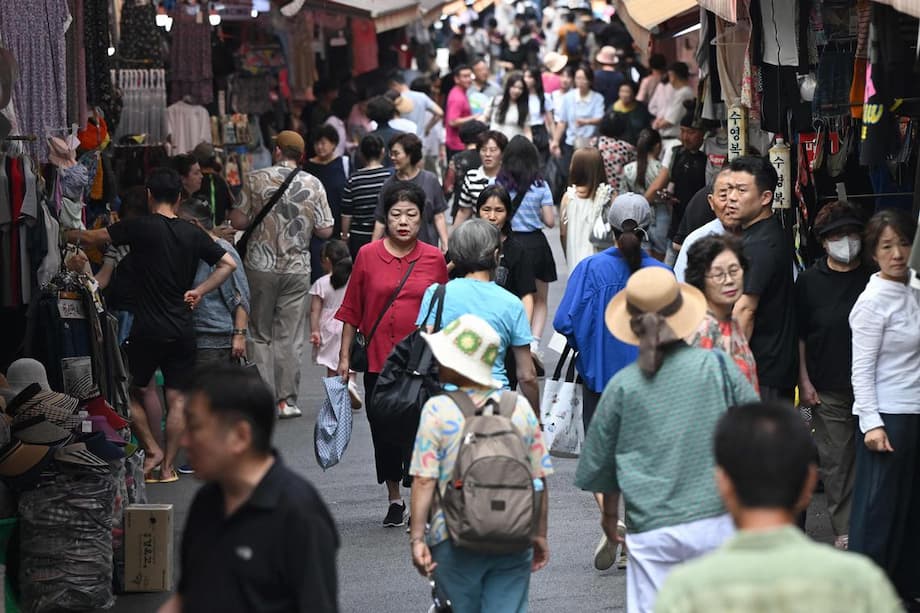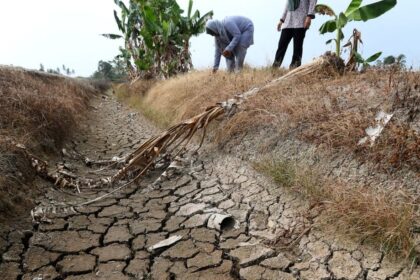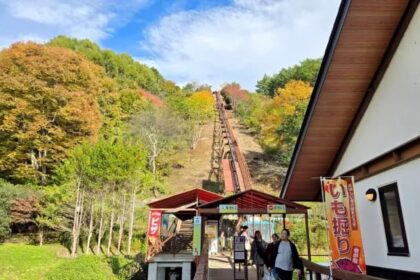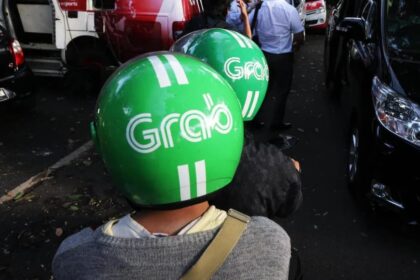South Korea Faces Unprecedented 10-Day October Holiday: A Nation on the Move
South Korea is on the brink of experiencing its longest public holiday in nearly a decade, as a rare alignment of national holidays in October 2025 could grant citizens a 10-day stretch off work and school. The possibility hinges on whether the government designates Friday, October 10, as a temporary public holiday. While the official decision is still pending, anticipation alone has already triggered a record-breaking surge in travel bookings, soaring airfares, and a heated debate about the broader economic and social implications of such an extended break.
- South Korea Faces Unprecedented 10-Day October Holiday: A Nation on the Move
- What’s Behind the Potential 10-Day Holiday?
- Travel Bookings and Airfares Soar: A Nation Ready to Explore
- October in Korea: A Season of Festivals, Foliage, and Cultural Vibrancy
- Economic Impact: Boom for Tourism, Questions for the Broader Economy
- Inbound Tourism: Visa-Free Entry for Chinese Tourists
- Practical Considerations for Travelers: Airline Rules and Local Closures
- Broader Implications: Culture, Policy, and the Future of Holidays
- In Summary
What’s Behind the Potential 10-Day Holiday?
The extraordinary holiday window results from the convergence of several major national holidays:
- October 3: National Foundation Day
- October 4–7: Chuseok (the Korean autumn harvest festival)
- October 8: Substitute holiday for Chuseok
- October 9: Hangeul Day (celebrating the Korean alphabet)
If the government adds October 10 as a temporary public holiday, the following weekend (October 11–12) would extend the break to a full 10 days. This would mark South Korea’s longest public holiday since 2017, when a similar alignment last occurred.
Government Decision Still Pending
Despite the mounting excitement, the government has not yet taken an official position on whether to designate October 10 as a holiday. The debate is intense, with business groups, policymakers, and economists weighing the potential benefits and drawbacks. The decision is expected to be announced closer to the holiday period, but the mere possibility has already set the travel industry in motion.
Travel Bookings and Airfares Soar: A Nation Ready to Explore
Travel agencies and airlines are reporting unprecedented demand for both international and domestic travel during the October holiday window. According to Kyowon Your Travel Easy, a leading travel agency, overseas bookings for October 3–9 have jumped by 28.7% compared to the Chuseok period in 2024. Popular destinations include Japan, Vietnam, Taiwan, and other Southeast Asian countries, reflecting South Koreans’ growing appetite for international travel.
Airlines are scrambling to meet demand. Jeju Air alone plans to add 234 international flights, offering more than 42,000 extra seats. Other carriers—Jin Air, T’way Air, Eastar Jet, and Air Busan—are also expanding routes, particularly to Japan and Southeast Asia. The result: a dramatic spike in airfares. Round-trip tickets from Seoul to Da Nang, Vietnam, which cost around 200,000 won ($140) earlier in the year, now range from 600,000 to 1.2 million won ($430–$860). Direct flights to New York are selling for about 3 million won ($2,160).
Domestic tourism is also booming. Hotels in Jeju Island and other major destinations are already over 90% booked for the holiday week, according to local media. Incheon International Airport expects international passenger numbers to surpass the current record of 2.14 million set during the Seollal New Year holiday in January.
International Airlines Respond
The surge in travel demand is not limited to South Korean carriers. International airlines are also adjusting their schedules. For example, Alaska Air Group is launching new nonstop routes between Seattle and Seoul Incheon in October 2025, further expanding connectivity between the U.S. and South Korea. Meanwhile, some airlines, such as Hawaiian Airlines, are reducing flights to Seoul due to shifting demand patterns, highlighting the dynamic nature of the travel industry in response to global events and consumer preferences.
October in Korea: A Season of Festivals, Foliage, and Cultural Vibrancy
October is widely regarded as one of the best months to visit South Korea. The weather is typically mild, with daytime temperatures ranging from 15 to 25°C (59–77°F) and cool, crisp nights. The country is transformed by vibrant autumn foliage, painting landscapes in shades of gold, red, and orange. This natural beauty, combined with a packed calendar of festivals and events, makes October a peak season for both domestic and international tourism.
Major Festivals and Events
Travelers in October can experience a rich tapestry of cultural celebrations, including:
- Jinju Lantern Festival
- Andong Mask Dance Festival
- Busan International Film Festival
- Gangneung Coffee Festival
- Baekje Culture Festival
- Seoul Fireworks Festival
- Numerous regional and local events
Popular activities include hiking in national parks like Seoraksan and Naejangsan, temple stays, night markets, and day trips to scenic spots such as Nami Island and the DMZ. The autumn harvest also brings seasonal foods like chestnuts, persimmons, and traditional rice cakes.
Travel Tips and Challenges
While October offers ideal conditions for sightseeing and cultural immersion, the extended holiday period can also present challenges. Transportation networks become crowded, accommodations fill up quickly, and many businesses—especially family-run shops and restaurants—may close for several days around Chuseok. Travelers are advised to book accommodations and tours well in advance and to pack layers for the variable temperatures.
Economic Impact: Boom for Tourism, Questions for the Broader Economy
The travel surge is a boon for airlines, hotels, and the tourism sector, but the broader economic impact is far more complex. Policymakers and business leaders are divided over whether the extended holiday will help or hurt the domestic economy.
Outbound Travel vs. Domestic Spending
Recent data from the National Assembly Research Service and Statistics Korea suggest that extra holidays tend to drive South Koreans abroad rather than boost local consumption. During the extended Seollal New Year holiday in January 2025, outbound travel rose to 2.97 million people—a 7.3% increase from the previous year—while domestic credit card spending fell by 34% compared to the previous week. Overall, domestic tourism spending in January dropped by 7.4% from December and 1.8% year-on-year.
Exports and industrial output also declined during the holiday period, with exports in January falling 10.2% from the previous year and industrial output down 1.6% month-on-month. While multiple factors contribute to these trends, the reduction in working days during extended holidays is seen as a significant factor.
Expert Analysis
According to a National Assembly Research Service report:
“Temporary public holidays are not boosting domestic spending; instead, they are resulting in increased overseas travel. The reduced number of working days during extended holidays likely contributed to the slowdown in production and exports.”
The report recommends moving away from one-off holidays and toward broader reforms, such as expanding substitute holiday coverage and shifting fixed-date holidays to weekdays, to ensure more predictable and equitable rest for all workers.
Equity and Workforce Concerns
The benefits of extended holidays are not evenly distributed. Businesses with fewer than five employees—about 35% of South Korea’s workforce—are not legally required to grant temporary public holidays. This creates disparities, as millions of workers may not enjoy the same time off as their peers in larger companies. Schools could also face schedule disruptions, with many planning midterm exams shortly after Chuseok.
Inbound Tourism: Visa-Free Entry for Chinese Tourists
In a bid to offset the outflow of Korean travelers and stimulate the local tourism industry, the government has introduced a temporary visa-free entry policy for Chinese tourist groups from September 29, 2025, through June 2026. This move is expected to attract more visitors from China, especially during the overlapping Chinese National Day and Chuseok holidays in early October.
Chinese travel platforms have reported a surge in searches and bookings for Korea, with flight searches up 68% and group travel product interest rising by more than 60% following the announcement. Popular destinations for Chinese tourists include Seoul, Jeju, Busan, Incheon, and Seogwipo. While the policy is expected to benefit middle-aged and family travelers from smaller Chinese cities, some industry experts caution that the impact may be limited, as most Chinese tourists prefer independent travel and Jeju Island already offers visa-free entry.
Practical Considerations for Travelers: Airline Rules and Local Closures
Travelers planning trips during the October holiday should be aware of several practical issues. For example, Emirates has announced a new rule banning the use of portable power banks on all flights from October 2025, following safety incidents involving lithium batteries. Passengers may carry only one power bank, which cannot be used or charged onboard and must be stored in the seat pocket or under the seat—not in overhead bins or checked luggage. Other airlines, including Singapore Airlines and Cathay Pacific, have similar restrictions.
Additionally, visitors to Korea during Chuseok should expect widespread closures of shops, restaurants, and attractions, particularly on the main holiday days. As one traveler noted on a popular forum:
“I know that most stores will be closed, so it’s a smart idea to not travel to Korea during this time. I’m just not sure what time I should visit Korea to avoid this.”
It’s generally advisable to plan travel either before or after the main Chuseok dates to avoid disruptions, or to focus on outdoor activities and festivals that continue during the holiday period.
Broader Implications: Culture, Policy, and the Future of Holidays
The debate over the October 2025 holiday highlights deeper questions about work-life balance, economic priorities, and social equity in South Korea. While extended holidays offer valuable rest and opportunities for family gatherings, travel, and cultural participation, they also expose gaps in labor protections and uneven access to leisure time. The government’s decision—whatever it may be—will set a precedent for how South Korea navigates the competing demands of economic growth, social well-being, and cultural tradition in an increasingly globalized world.
In Summary
- South Korea may experience a 10-day public holiday in October 2025 if the government designates October 10 as a temporary holiday.
- Travel demand has surged, with overseas bookings up nearly 29% and airfares rising sharply.
- Airlines are adding flights and hotels are nearing full capacity, especially in popular destinations like Jeju Island.
- Economic data suggests extended holidays boost outbound travel but may reduce domestic spending and productivity.
- Small businesses and some workers may not benefit equally from the holiday, raising equity concerns.
- The government is introducing visa-free entry for Chinese tourist groups to boost inbound tourism during the holiday period.
- Travelers should plan ahead for crowded transportation, high prices, and local closures during Chuseok and the extended holiday.
- The outcome of the government’s decision will have lasting implications for South Korea’s approach to holidays, work, and leisure.












